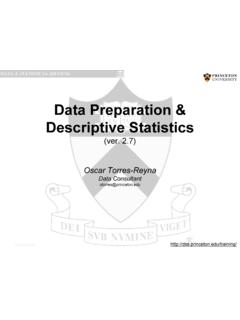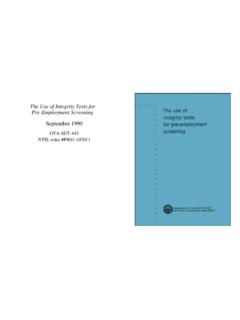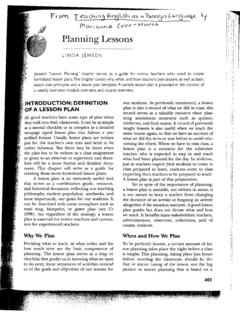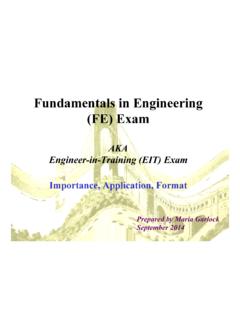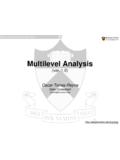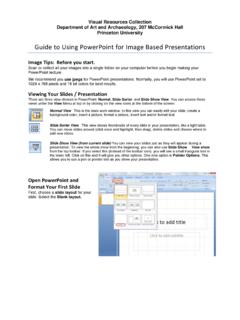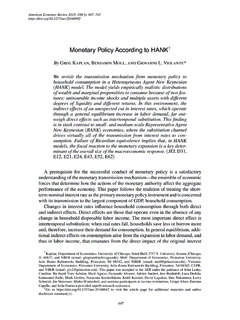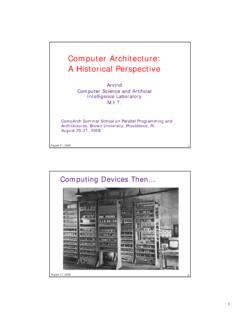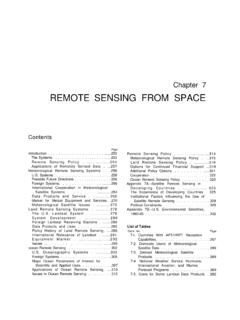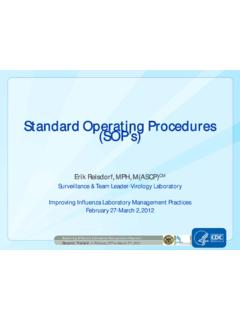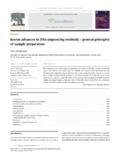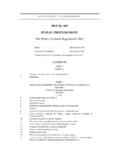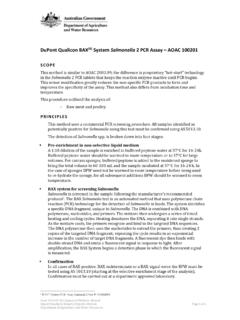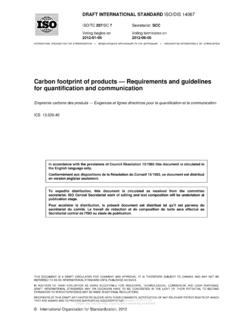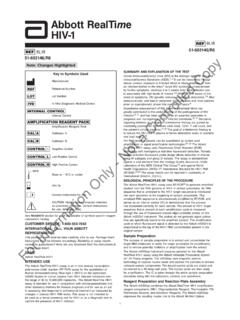Transcription of Validity, Reliability, and Quality Assurance
1 Chapter 3 validity , reliability , andQuality Assurance Science is one of the very few human activities in which errors are systematically criticized andfairly often, in time, corrected. Sir Karl R. Popper1902- In most cases, reasonable prudence is in fact common prudence; but strictly it is never itsmeasure; a whole calling may have unduly lagged in the adoption of new and available devices. It nevermay set its own tests, however persuasive be its usages. Courts must in the end say what is required;there are precautions so imperative that even their universal disregard will not excuse their omission. Justice HolmesThe Hooper, 60 737 (2d Cir. 1932) The right to search for truth implies also a duty; one must not conceal any part of what one hasrecognized to be true. Albert Einstein1879-1955 CONTENTSPageVALIDITY AND reliability OF DNA TECHNOLOGIES.
2 Single-locus Probe Analysis ..Multilocus Probe Analysis ..Polymerase Chain Reaction .. Quality CONTROL AND Quality Assurance ..The Role of Professional Societies ..Nonregulatory Mechanisms ..State Authority To Regulate Crime Laboratories..Federal Authority To Regulate Crime Laboratories..SETTING STANDARDS ..STANDARDIZATION ..FINDINGS AND SUMMARY ..CHAPTER PREFERENCES ..59606869717273758082838385 BoxesPage3-A. Considerations for Choosing Forensic Single-locus Probes .. 623-B. Scientific Controls for RFLP Analysis.. ,..+ ..643-C. Statistics and RFLP Analysis .. 673-D. Quality Assurance and Drug Testing Laboratories .. 713-E. Quality Assurance and the FBI TechnicalWorking Group onDNA Analysis Methods .. 743-F. Negligence Litigation .. 763-G. Quality Assurance and Clinical Laboratories ..78 FiguresPage3-1. Example of One DNA Pattern in a Rape Case.
3 603-2. DNA Typing in Two Paternity Cases..613-3. DNA Typing and Murder: A Less Than Ideal First Analysis and a .. 65 Chapter 3 validity , reliability , and Quality AssuranceGiven the variation in DNA sequence amongindividuals (see ch. 2), no scientific doubt exists thattechnologies available today accurately detect ge-netic differences. Properly performed and inter-preted, a sufficiently detailed examination of twosamples of DNA can determine if DNA patternsmatch, and, if they do, the likelihood that a singlesource is responsible for both samples (except in thecase of identical twins).Nevertheless, it is generally agreed that applyingDNA tests to forensic samples, especially criminalevidence, potentially presents more difficulties thananalyzing samples in basic research or clinicaldiagnosis.
4 Samples from crime scenes are frequentlysmall and might be of poor Quality because ofexposure to a spectrum of environmental unlike paternity samples, where each sample isfrom an identified source, the contributor to evi-dence taken from a crime scene is often unknown. Todate, several studies have elucidated ways to over-come some of the demands of using DNA typing onforensic samples. Other efforts are under way tofurther refine and develop strategies that adhere togenerally accepted practices in the scientific , then, constitutes a sufficient examinationof a forensic sample? When does sufficientlydetailed become unduly burdensome? What crite-ria are necessary for valid and reliable DNA typingof forensic samples? Does consensus exist for somescientific issues and not others?
5 If so, what can beresolved? Is resolution necessary for all scientificissues? If not, what areas can and should be covered,and what areas are best left to the discretion of theforensic analyst? What are the best mechanisms forsettling differences of opinion? And finally, whodecides? As the criminal justice system increas-ingly turns to DNA tests, these questions, some ofthem pressing, must be chapter identifies and analyzes several keyissues that bear on the validity and reliability ofDNA tests for forensic uses, including:lltechnical advantages and limitations of therestriction figment length polymorphism (RFLP)technique,technical advantages and limitations of thepolymerase chain reaction (PCR) technology,llstandards-laboratory and personnel-for en-suring accurate DNA typing in the forensiccontext, andmechanisms for Quality some issues, agreement or near agreement hasbeen reached; the chapter describes these areas.
6 Italso examines how consensus has been achieved inother applications of DNA techniques or in newmedical technologies, and analyzes how such proc-esses could pertain to forensic applications of DNAtechnologies. Finally, the chapter discusses congres-sional, Federal, and State interest in Quality AND reliability OFDNA TECHNOLOGIESAn important matter in the use of DNA asevidence (see ch. 4) is whether the detection meth-ods are scientifically valid. validity centers onwhether a test will correctly identify true matchesand true nonmatches. For RFLP analysis, a valid testor set of tests would not falsely classify or excludea subject by yielding a profile not true to type, ,a spurious pattern would not randomly arise. TheOffice of Technology Assessment (OTA) findsthat molecular and genetic principles underlyingDNA techniques are solid and can be successfullyapplied to forensic casework.
7 Forensic uses ofDNA tests are concerns about the validity of DNA typingfor forensic applications focused on the nature of thesamples. Casework samples are obtained from avariety of less-than-sterile materials ( , glass,wood, dirt, and fabric) that are often subjected tosunlight, moisture, or desiccation. Samples can alsobe contaminated with unknown genetic materialsuch as bacteria, plant, or animal secretions. Valida-tion studies, however, have established that generalDNA techniques are applicable for the breadth ofconditions likely to be encountered in forensiccasework, and have dispelled notions that RFLP analysis is invalid because of such conditions. ForRFLP analysis, these studies confirmed that forensicsamples in and of themselves are not barriers toapplying DNA technologies that use single-locusand multilocus probes (2,19,32,34,35,50,52,66,67).
8 59 60 l Genetic Witness: Forensic Uses of DNA TestsSimilar validation studies for PCR are being per-formed (18,25,82).A second aspect of DNA testing of forensicsamples is reliability . Any test must be , it must measure reproducibly that which it iscapable of measuring under routine conditions ofuse. Reliable tests must perform reproducibly withina laboratory, across many laboratories, and in thehands of different practitioners. Thus, reliabilityinvolves several factors, including the proceduresused, laboratory performance, laboratory recordkeep-ing, Quality control, and Quality Assurance . OTAfinds that, properly performed, DNA technolo-gies per se are reliable procedure, used carelessly, does notrender the test unreliable-the particular test resultwould be in question.
9 For forensic DNA analysis,questions exist about the appropriateness of usingcertain procedures over others, how data areinterpreted, or about the extent or type of qualitycontrol and Quality Assurance necessary to mini-mize human factors and ensure that a particulartest result is reliable (62,70,86). As described laterin this chapter, some argue that because greaterexperience exists for RFLP analysis, it is currentlymore reliable than , although forensic uses of DNA tests arevalid and reliable when performed properly, manyharbor the misconception that DNA typing appliedto forensic samples always yields a yes or no answer. A test that does not give a yes or no each time is not incorrect, nor unreliable. An impor-tant and often overlooked result of an analysis couldbe inconclusive a result that should not bemisconstrued as either a match or Probe AnalysisSeveral acceptable protocols exist to determinewhether two samples yield similar or different DNApatterns at various loci.
10 In forensic applications, themethod most commonly employed in the UnitedStates involves using DNA probes that detect sizedissimilarities among individuals at certain loci. Byusing several probes in combination or sequentially,an exam]nier can determine whether DNA patternsfrom questioned samples are consistent with a sus-pect s pattern (figure 3-1) or, in paternity cases,whether an alleged father s pattern is consistent witha child s (figure 3-2).Figure 3-l Example of One DNA Patternin a Rape CaseBiological evidence from this rape case was separated by labora-tory techniques into separate male and female fractions. Aftersingle-locus RFLP analysis of these fractions and known samplesobtained from the victim and suspect, the results reveal that forthis particular probe~the DNA pattern of the male fraction matchesthe pattern of the : Federal Bureau of Investigation, basic tool used in single-locus and multilocusprobe analysis is called Southern blotting, or South-ern transfer (84) (see ch.)
